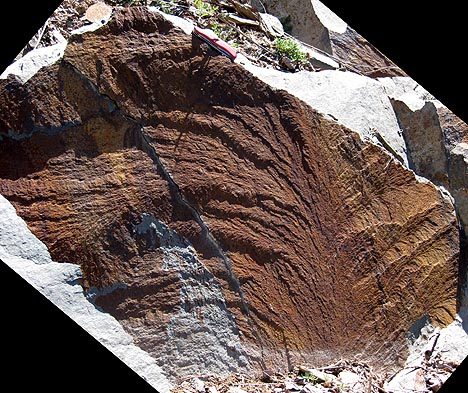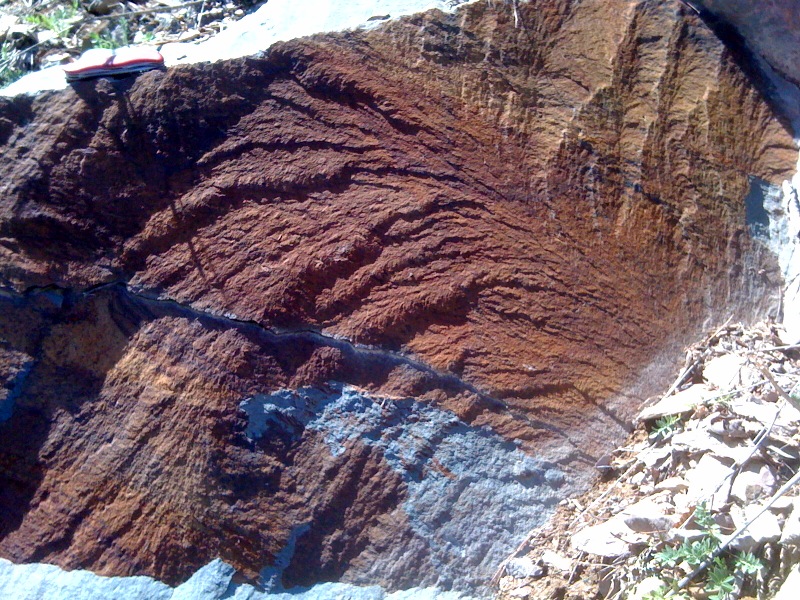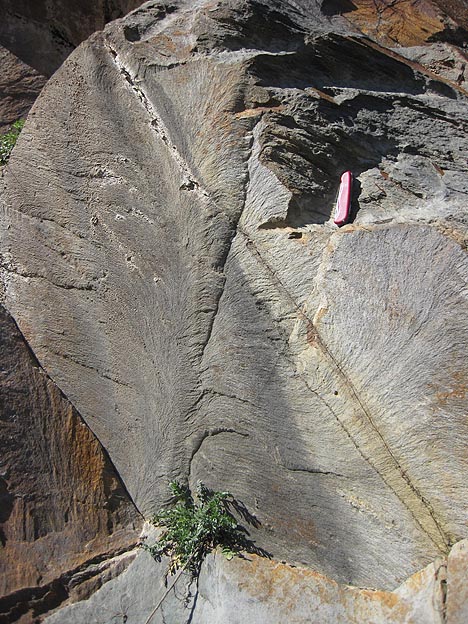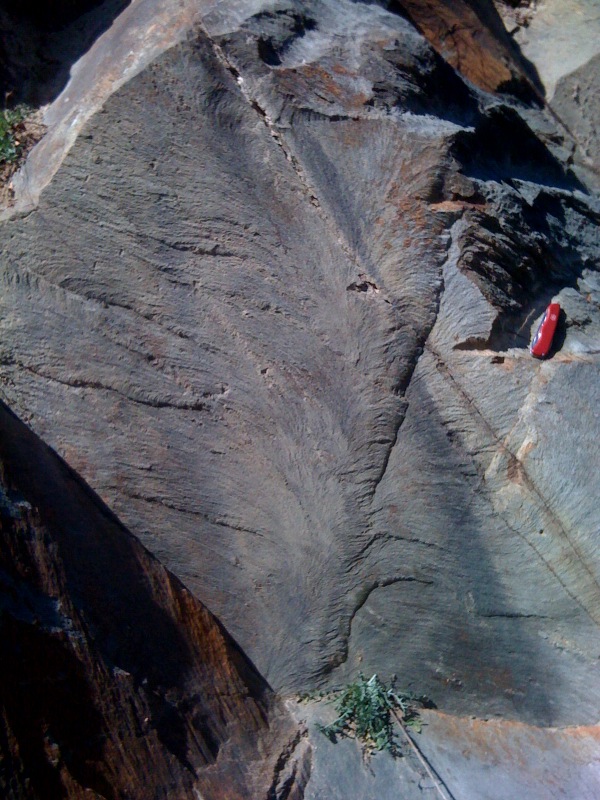The final chapter in our Transect saga is now here. In some ways, it’s the least thrilling of the bunch. On the other hand, when I see a nice example of this structure, it makes me squeal like a little girl.
I refer, of course, to plumose structure, the small-scale architecture of a joint surface. We saw multiple great examples on the trip, but my favorites came with the first post-lunch stop on Transect Trip day #1, at an outcrop of the Weverton Formation showing a fine-grained deposit of siltstone.
I posted versions of both these photos previously via iPhone, but here I’ll give you the crisper Canon Elph version coupled with reposting of the iPhone shots for comparison purposes.
Plumose structure branches out in the joint propagation direction, the curvilinear “plumes” are thought to be perpendicular to the leading edge of the joint as it cracks through the rock. These late-stage brittle features may be related to the very latest part of Alleghanian deformation, or they may be related to recent uplift of these rocks.
All righty, then. I think that brings us up to the present day. Those of you who requested more details about the live-geoblogged photos, has this series answered your questions? If not, what do you need more details on?





Thanks Callan! I’ve really enjoyed this series. The stratigraphic sections and structural diagrams were especially helpful and interesting.
These are hands-down some of the most spectacular plumose structure photos I’ve ever seen. Great Work!
-Joe K.
Thanks Joe!